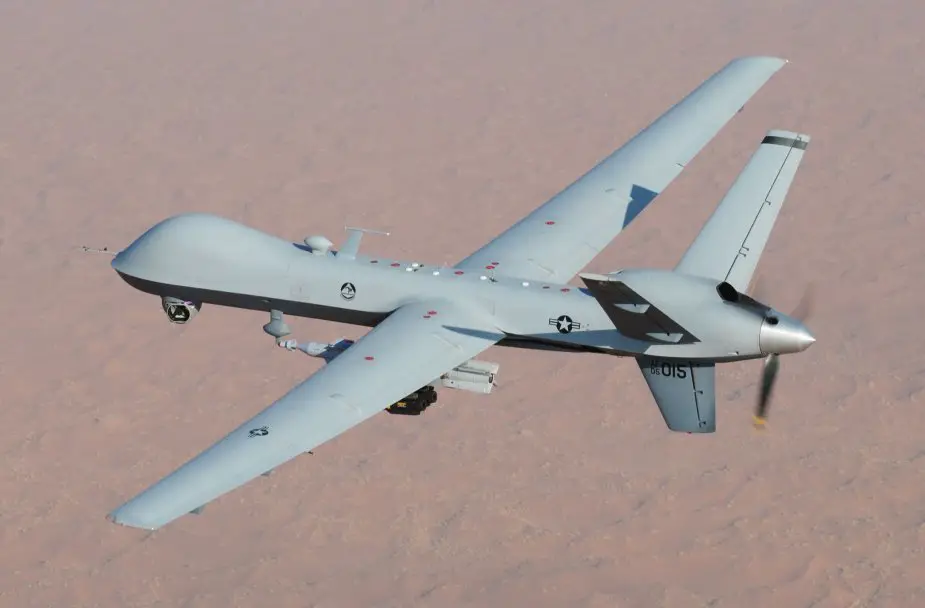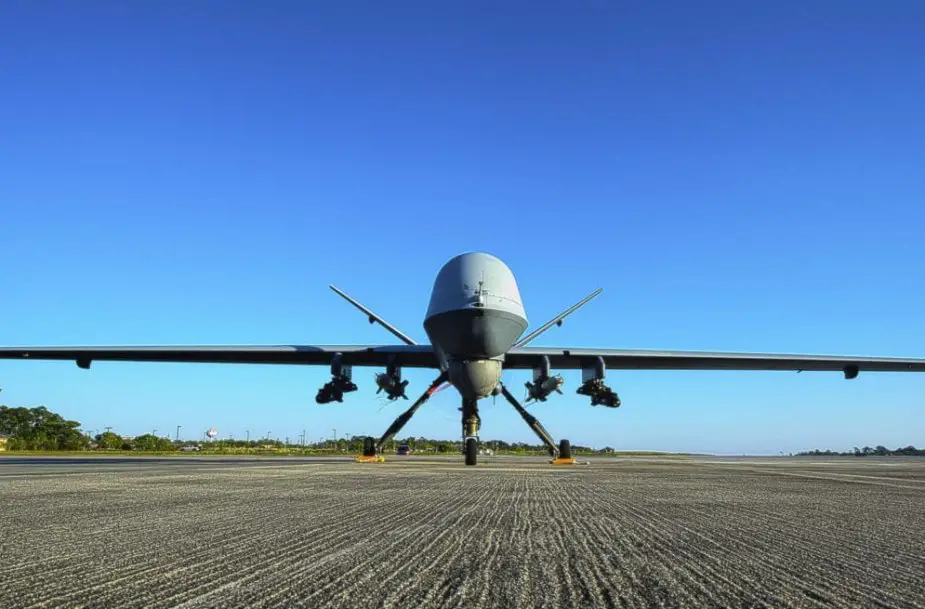The US Naval Air Systems Command ordered two Reapers from General Atomics Aeronautical Systems Inc. (GA-ASI), of Poway, California, with a $26.9 million firm-fixed-price contract, according to the June 22 Defense Department announcement. The contract also provides for one dual-control mobile ground-control station, one modular data center and one mobile ground-control station.
Follow Navy Recognition on Google News at this link
 An MQ-9 Reaper unmanned aerial vehicle flies a combat mission over southern Afghanistan. (Picture source: US Air Force/Lt. Col. Leslie Pratt)
An MQ-9 Reaper unmanned aerial vehicle flies a combat mission over southern Afghanistan. (Picture source: US Air Force/Lt. Col. Leslie Pratt)
The Naval Air Systems Command ordered the two Reapers from General Atomics Aeronautical Systems Inc. (GA-ASI), of Poway, California, with a $26.9 million firm-fixed-price contract, according to the June 22 Defense Department announcement. The contract also provides for one dual-control mobile ground-control station, one modular data center and one mobile ground-control station.
The MQ-9 Reaper is a remotely piloted medium-altitude, long-endurance (MALE) aircraft designed for Intelligence, Surveillance, Target Acquisition and Reconnaissance (ISTAR), and attack missions.
The MQ-9 Reaper is the primary offensive strike unmanned aerial vehicle for the U.S. Air Force. Given its significant loiter time, wide-range sensors, multi-mode communications suite, and precision weapons -- it provides a unique capability to perform strike, coordination, and reconnaissance against high-value, fleeting, and time-sensitive targets.
The Marine Corps plans to begin operations with its own Reapers in 2021.
Recently, the US Air Force has formally launched its search for an unmanned air vehicle (UAV) to replace the General Atomics Aeronautical Systems MQ-9 Reaper beginning in 2030.
 An MQ-9 Reaper sits on the flight line at Hurlburt Field, Florida, in 2014. (Picture source: US Air Force/Staff Sgt. John Bainter)
An MQ-9 Reaper sits on the flight line at Hurlburt Field, Florida, in 2014. (Picture source: US Air Force/Staff Sgt. John Bainter)



